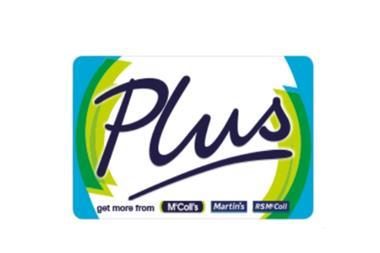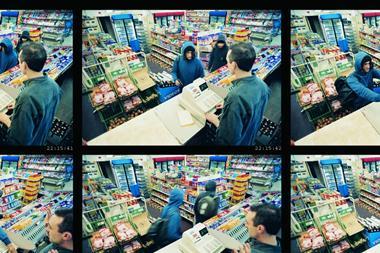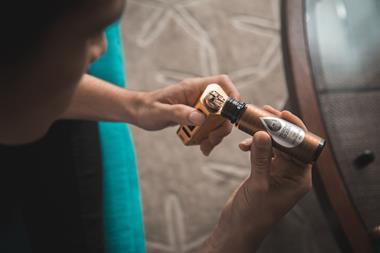The multiples have had loyalty card schemes since the early Nineties. Aidan Fortune looks at whether the time is right for the convenience sector to get in on the act
British consumers are a loyal bunch. Research carried out in 2010 by the Subway chain revealed that the average UK adult is a member of at least three loyalty schemes and has been collecting points for at least five years.
Loyalty card programmes have been around for longer than just five years, though fuel providers and supermarket multiples have been leading the charge on card schemes for over a decade. The Tesco Clubcard scheme currently has 16 million members and Nectar is currently just pipping them with 17 million. High street retailers have also been getting in on the act.
Harvesting the rewards
One retailer who didn’t want to hang around for the symbol groups to introduce a loyalty card scheme decided to implement his own.
Bishop Retail operations director Darren MacDonald recently introduced a scheme across the group’s six Mace stores under the Harvest Energy brand. He says that the independent sector should have looked at loyalty card schemes long ago. “Sir Terry Leahy said that it was the Clubcard scheme that helped Tesco become the monster it is today. Loyalty cards are a great way to engage people. They create a good feeling for customers who like getting something extra for nothing and they keep coming back to the store.”
Darren adds that the data generated by the loyalty card scheme can be used to tailor promotions in stores. “Everything that customers buy will be recorded onto the system and we can use this information to better target certain demographics, maximising the store’s potential.”
He says that the key to persuading people to join a loyalty card scheme is to keep it simple. “Customers don’t want to fill out massive forms or give contact numbers,” he explains. “So, all that’s needed is an e-mail address and then they can start collecting points when they shop.”
However the convenience store sector has been under-represented to date. In 2006, Wedge launched a loyalty card scheme that any independent retailer can join. It offers customer rewards predetermined by the individual store owner. Since its launch, more than 1,400 stores across the UK have signed up to Wedge.
Booker also introduced the Premier Collector Card Scheme in 2004, which is run through third-party organiser Key Points. Key Points managing director Tony Scott says that a card scheme “cements” the existing loyalty of a store’s customer base. “It helps increase footfall and spending and over 80% of points are redeemed in the store where they were collected, so retailers needn’t worry that someone else is getting the benefit of their hard work,” he says. “Given the level of competition in the convenience sector, a loyalty card scheme like ours can help sustain growth.”
Torex vice-president, petrol and convenience, Jon Dunman, says that the main barrier to entry for independent retailers wanting their own loyalty card scheme has been money. “Independent convenience stores cannot always afford the technology to compete with the supermarkets,” he says. “However, symbol groups can gain a return on investment by giving independent convenience stores the analysis and loyalty features they need, freeing up the retailers to do what they do best keeping the customer happy.”
Costcutter rolled out its loyalty card scheme late last year and decided to organise it on a local level, with each store being responsible for the rewards it offers. It currently has 160 stores signed up with another 30 waiting to join.
Head of marketing Ian Bishop says that a scheme like this sets you apart from the competition. “It creates a huge point of difference against other stores in a community,” he adds. “Some of our retailers introduced the scheme when they were faced with competition from the multiples and they’ve found that their sales haven’t dropped at all and have actually risen in some cases.”
Bishop explains that the scheme is “pretty much free” for retailers, other than the nominal cost of the cards themselves and the slight loss of margin involved in redeeming goods. “Given average redemption rates, it costs retailers less than 1% of their margins,” he says. “We warn retailers to be mindful of the fact that there are thousands of points out there that could potentially all be redeemed at once, but Costcutter has a contingency plan for that situation.”
Under Booker’s Key Points scheme, the cost to the retailer is usually 0.3-0.5% of the store’s turnover, but if offering the scheme produces a 2.5% boost to sales any additional gain is all profit.
Richard Williams, who owns a Costcutter in Somerton, Somerset, has more than 3,000 customers registered on his scheme. He believes that it’s a great way to keep customers coming back. “If you have serious competition in the area, then you have to do everything possible to stand out and attract shoppers,” he says.
Dunman adds that although an independent sector loyalty card scheme would follow the same principles as that of a multiple’s, c-store owners would be able to use their flexibility to their advantage. “The advantage for independents is that they can tailor schemes to local conditions which they see around them, whereas the multiples are making decisions from ‘head office’ that can be remote from the real world ‘sharp end’.”
Bishop agrees: “We give our retailers the flexibility to manipulate the rewards for certain days. They can use the scheme to speed up sales of short-dated products or left-over promotional stock rather than just discounting it,” he says. “These are independent retailers who are investing their margins by giving away points and they will individually reap the benefits of the rewards they offer.”
Richard uses his loyalty programme to increase sales on what were previously slow days.
“Tuesday trade was very low in comparison to the rest of the week and the card made an enormous difference,” he says. “We offered double points to pensioners, and found that they are very shrewd and will change their shopping habits if there’s a good reason for them to do so.”
While Costcutter members are reaping the benefits of a loyalty card scheme, other symbol group members are feeling left behind.
Cambridgeshire retailer Jonathan James, who owns Spar and Budgens stores, is frustrated at the lack of symbol-wide loyalty card schemes. “I’m desperate to have one in my food stores,” he says. “Currently, we offer Nectar points in our forecourts that grocery items also count towards and it’s been very successful with customers. We just need to replicate this in the convenience stores.”
Jonathan says that his customers have been clamouring for a loyalty card scheme. “We have a customer panel meeting every two months and each time the panellists ask us to get one.”
He adds that independent convenience retailers need a way of rewarding loyal customers. “For most retailers, the only way of rewarding loyalty at the moment is promotions, but passing customers can take advantage of those as well,” says Jonathan. “I’d prefer a ‘sniper approach’ to customer rewards like a loyalty card scheme rather than the shotgun approach of promotions.”
To fill the gap, Jonathan has created a rewards scheme on a more simple level. “It’s a deal where a customer receives a gift if they spend a certain amount of money over a period of time,” he explains. “It works well, but it doesn’t provide the data of a loyalty card scheme.”
Dunman says the multiples have used their loyalty card schemes to give themselves a market advantage. “Their key advantage is access to technology which helps them analyse buying patterns and adjust stock levels and pricing accordingly,” he says.
Sadly, implementing a symbol-wide loyalty card scheme isn’t as straightforward as it seems due to the different epos systems being used by various members of the same group. Costcutter has managed to circumvent this issue by utilising its bespoke epos system, CPOS. Torex, on the other hand, has just developed prototype technology that enables symbol groups to run loyalty card schemes through any epos system.
“Our new Torex LoyaltyLink technology allows any retailer to run any third-party loyalty scheme through their current epos system,” says Dunman. “The product will be officially released later this year.”
While the convenience sector still has a long way to go before store owners can benefit fully from loyalty card schemes, technology is catching up with retailer demands. It remains to be seen whether symbol groups are going to play their cards right.

























No comments yet